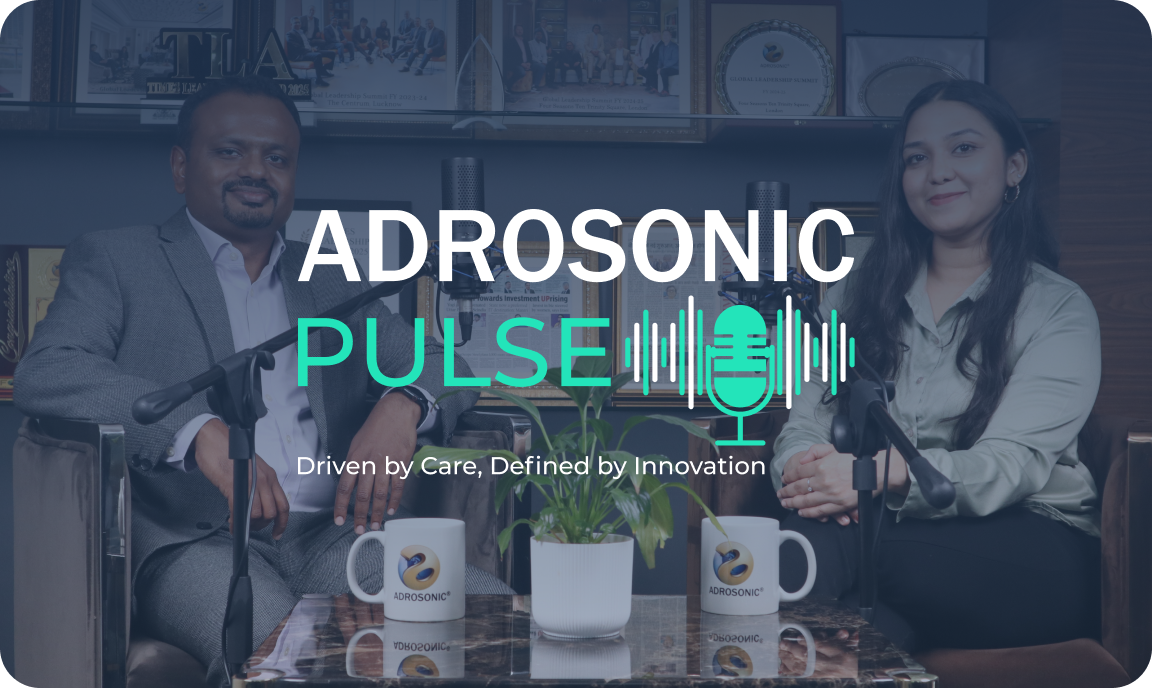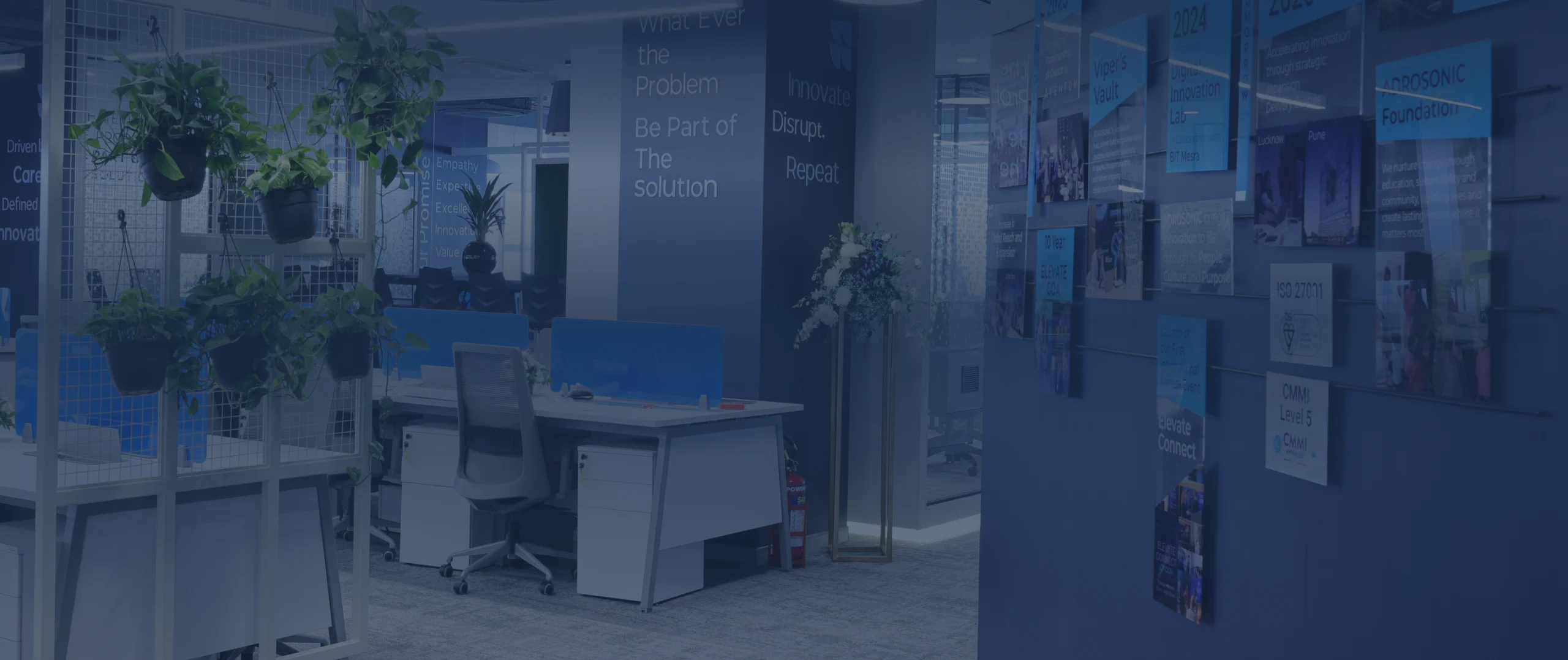THE ADROSONIC QUALITY MATURITY MODEL PROVIDES A ROADMAP FOR CLIENTS AT ANY POINT IN THEIR QUALITY JOURNEY TO IMPROVE CUSTOMER SATISFACTION AND ROI."NEERAJ KUMAR, DIRECTOR OF QUALITY ENGINEERING
The ADROSONIC Quality Maturity Model is the leading framework for ensuring the highest standards of quality for businesses in every step of the software development life cycle. Our team of seasoned experts developed the ADROSONIC Quality Maturity Model, drawn from a decade of extensive global customer experience combined with industry best practices, including CMMI (Capability Maturity Model Integration) and TMMI (Test Maturity Model Integration).
However, unlike traditional frameworks, the ADROSONIC Quality Maturity Model is designed to proactively build quality into systems. This shift-left approach identifies bugs early in the process, enabling faster resolution and increasing ROI.
The ADROSONIC Quality Maturity Model provides a roadmap for clients at any point in their quality journey. The model comprises five maturity levels of quality, depicting the transition from an ad-hoc approach to a data-driven, optimised approach.
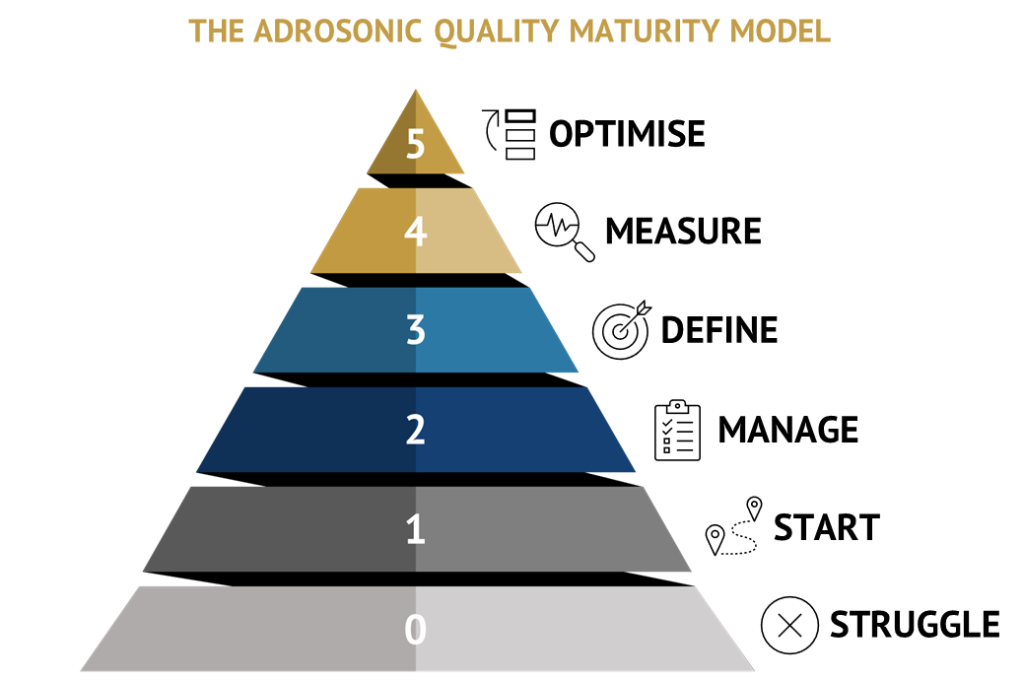
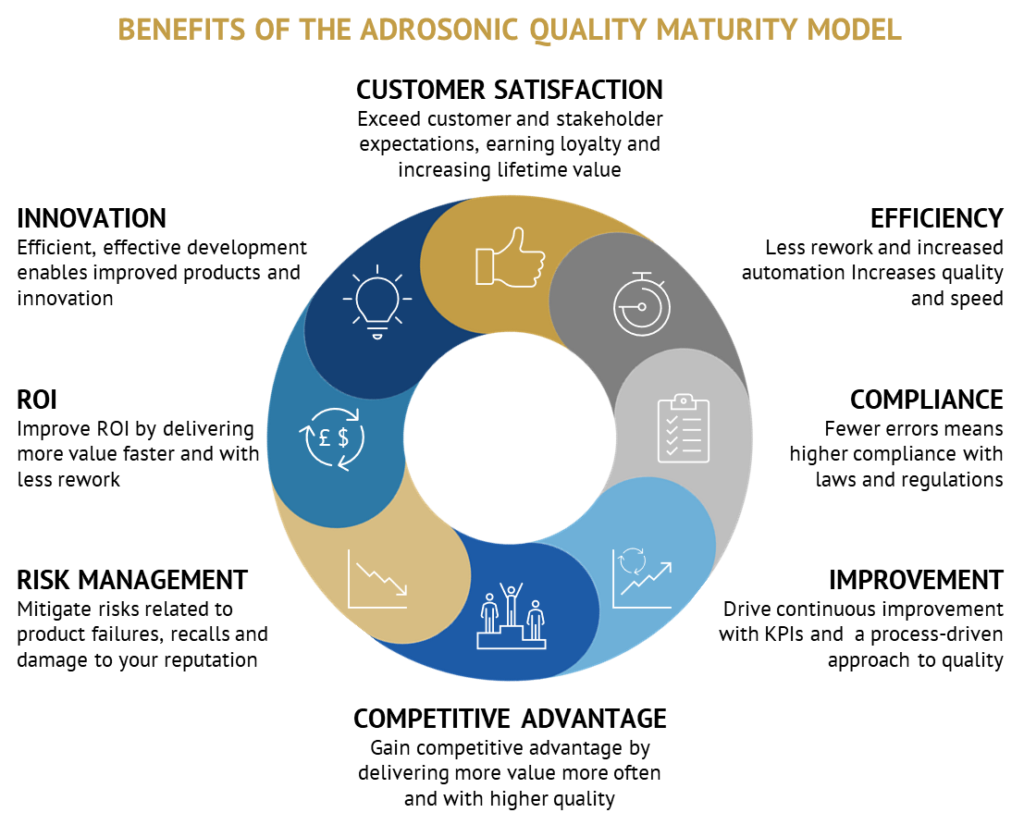
Overview of the ADROSONIC Quality Maturity Model
The model provides customers with a framework for improving their quality processes in a systematic way in order to maximize ROI and customer satisfaction. Here’s how the framework enables continuous delivery and consistent quality as the business builds towards maturity level 5.
Maturity Level 0
This level is defined by the lack of quality processes. Quality problems and high levels of rework are common, resulting in late delivery, high costs and dissatisfied customers.
Maturity Level 1
At this initial stage, testing is sporadic and reactive, often part of debugging. Stakeholders encounter unpredictable quality and schedule overruns. The focus here is on moving away from reliance on individual heroics towards a more predictable process.
Maturity Level 2
Testing evolves into a managed, strategic process, separated from debugging. Stakeholders gain transparency and can expect more reliable adherence to schedules and requirements, with risks being actively managed and mitigated.
Maturity Level 3
Testing is now a proactive, integral part of the entire software development lifecycle. Stakeholders benefit from a comprehensive approach that includes non-functional testing, ensuring the delivery of robust and high-performing products.
Maturity Level 4
Testing is a mature, measured process. Stakeholders enjoy advanced quality assessment through metrics and reviews, leading to early detection of issues and consistent product quality, which translates to greater confidence in the market.
Maturity Level 5
At the summit, testing is optimized and continuously improved based on quantitative insights. Stakeholders benefit from the highest standards of efficiency and innovation in testing, guaranteeing market-leading product quality and reliability.
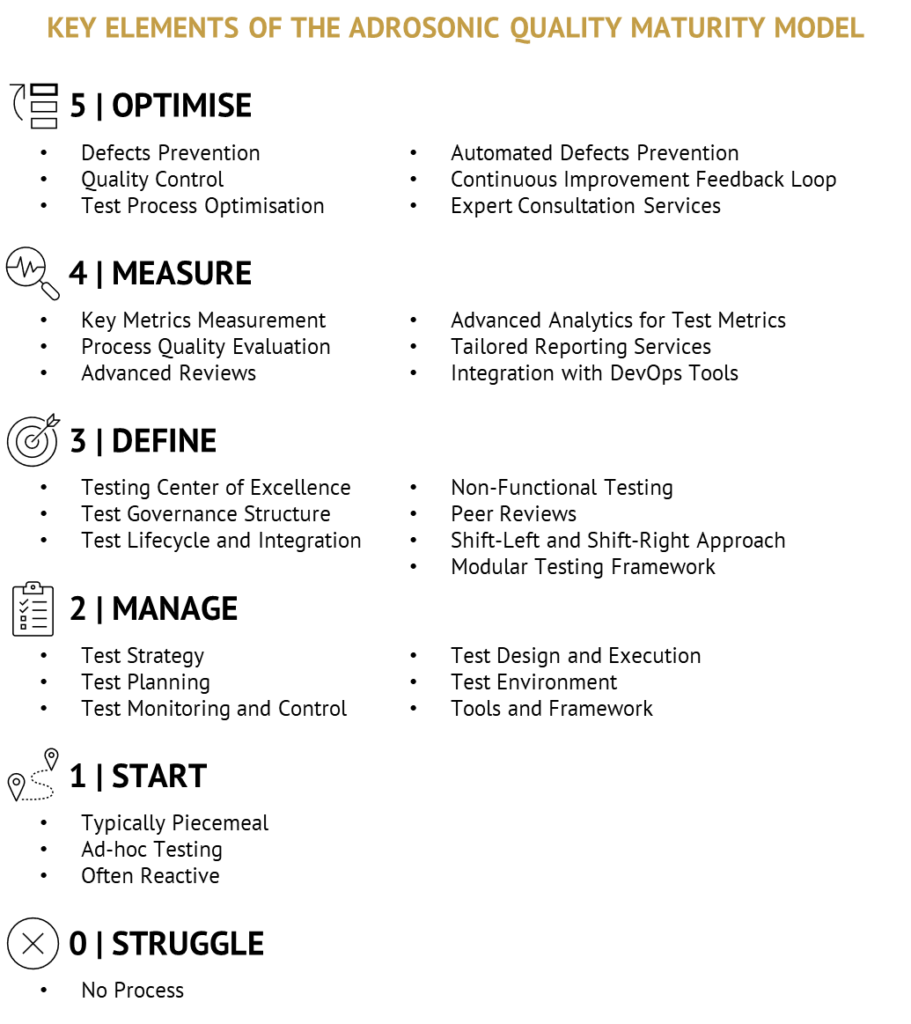
Metrics
There are 16 specific goals within the five maturity levels and over 50 Key Performance Indicators (KPIs) to measure and manage.
Regular assessments allow you to identify gaps and continuously improve. This is the key to your ability move to higher levels of the maturity model.
With each improvement, you increase efficiency, quality and customer satisfaction.
Proven Results
56% RETURN
ROI of Quality Engineering-based initiatives with emphasis on automation
4,994 PERSON-DAYS
Manual effort saved within one year by implementing reusable automation assets in test cycles
50 RELEASES
Number of releases delivered with consistent, high quality within one year




